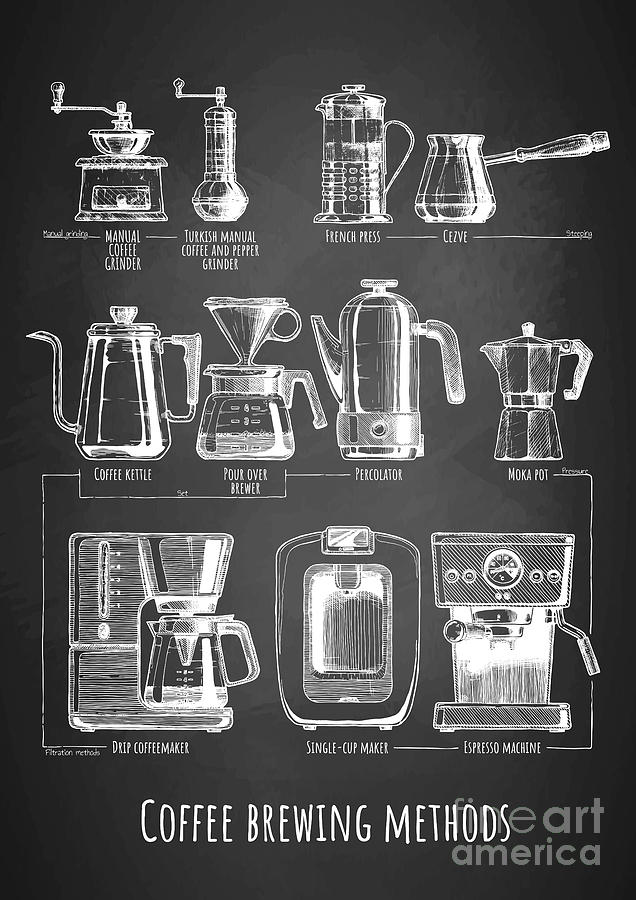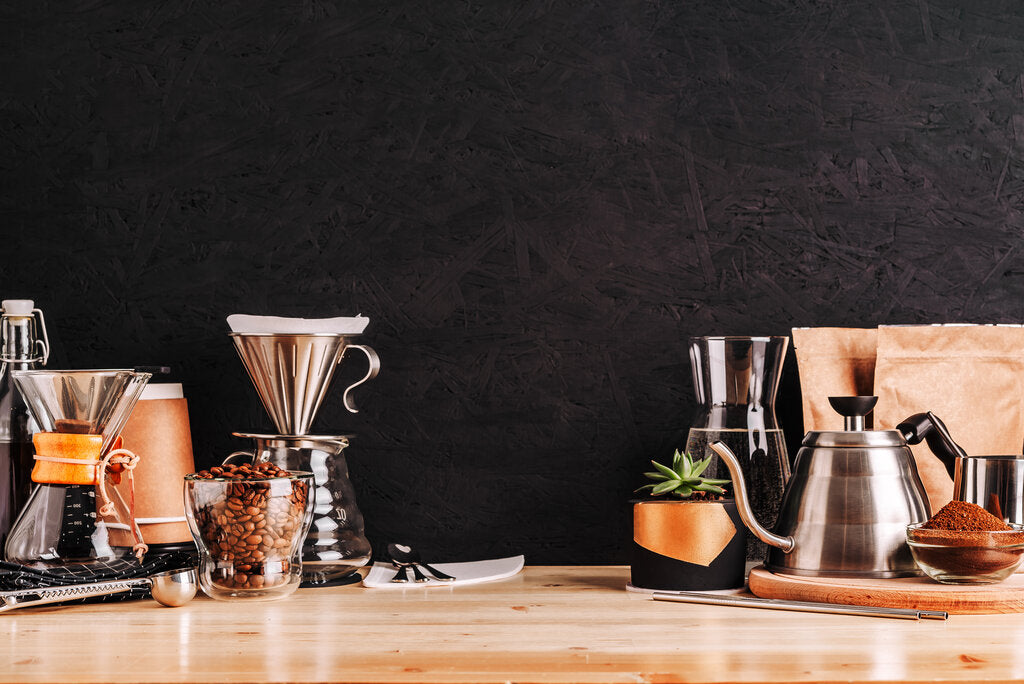The Ultimate Contrast of Popular Coffee Brewing Methods for Home Baristas
The Ultimate Contrast of Popular Coffee Brewing Methods for Home Baristas
Blog Article
The Science Behind Coffee Brewing: Exactly How Temperature and Time Affect Your Drink
Comprehending the scientific research behind coffee developing exposes that temperature and time are not simple variables but critical elements that determine the drink's flavor account and general top quality. The optimal developing temperature usually falls in between 195 ° F and 205 ° F, while the duration of removal varies considerably throughout various methods. This interaction of variables can result in a cup that is either wonderful or disappointing. As we explore the nuances of these aspects, the inquiry arises: just how can one properly balance temperature level and time to attain that best brew?
The Chemistry of Coffee Removal
The chemistry of coffee removal explores the detailed procedures that transform raw coffee beans into the aromatic drink taken pleasure in worldwide. This makeover primarily includes the solubility of different compounds existing in the beans, which are affected by elements such as grind dimension, water top quality, and the developing approach utilized.
Throughout the developing procedure, warm water works as a solvent, removing soluble substances, consisting of high levels of caffeine, sugars, acids, and lipids, from the coffee premises. Each compound adds to the taste profile, aroma, and body of the last drink. As an example, acids are in charge of tangy and bright notes, while oils add to an abundant mouthfeel.
The removal procedure is not uniform; different substances liquify at different rates. The initial stages of developing essence acids and sugars, leading to a pleasurable acidity, while long term removal can bring about bitterness because of over-extraction of undesirable compounds. Recognizing these chemical interactions is important for maximizing developing methods, as the balance in between extraction time and water temperature level can significantly influence the total quality of the coffee. Inevitably, understanding the chemistry of coffee removal is vital to attaining a all-around and savory mug.
Perfect Developing Temperatures
Discovering the best developing temperature level is essential for unlocking the full capacity of coffee tastes and scents - coffee brewing methods. Research study suggests that the ideal range for brewing coffee lies in between 195 ° F to 205 ° F(90 ° C to 96 ° C) Within this variety, the extraction procedure effectively liquifies the desirable soluble compounds in coffee beans, bring about a delicious and balanced mug
Developing at lower temperatures, such as below 195 ° F(90 ° C ), might result in under-extraction, producing a weak and acidic brew with low-key flavors. Conversely, developing at temperatures surpassing 205 ° F(96 ° C) can lead to over-extraction, generating a extreme and bitter preference as a result of the too much dissolution of unwanted substances, such as tannins.
Additionally, the perfect brewing temperature level can vary relying on the coffee bean kind and roast degree. As an example, lighter roasts usually gain from somewhat greater temperature levels to boost their complex flavor accounts, while darker roasts may be better matched to reduced temperatures to reduce bitterness.
Eventually, maintaining accuracy in developing temperatures is critical for accomplishing a harmonious balance of tastes, guaranteeing that every cup of coffee provides a gratifying sensory experience.
Influence of Developing Time
Brewing time plays an essential function in establishing the flavor profile and total quality of coffee. Much shorter developing times can result in under-extraction, leading to a sour or weak read what he said taste, as not enough soluble compounds are liquified.
Ideal developing time varies relying on the technique made use of and the grind dimension of the coffee. A French press generally calls for about four mins, while coffee removal is typically completed within 25 to 30 secs. It is necessary to adjust brewing time in combination with other variables, such as water temperature and coffee-to-water ratio, to attain the wanted flavor account.
Comprehending the influence of developing time enables coffee enthusiasts to improve their developing techniques, inevitably improving the sensory experience of their mug (coffee brewing methods). With careful attention to this variable, one can unlock the full potential of the coffee, disclosing its special qualities and nuances
Brewing Methods and Their Impacts

For example, approaches like French press and cold mixture allow for a much longer steeping time, resulting in a fuller body and durable flavor due to increased removal of oils and soluble solids. Conversely, coffee developing makes use of high pressure and a much shorter removal time, generating a focused shot that highlights extreme flavors and a rich crema.
Pour-over strategies, such as Chemex or V60, use an even more regulated removal process, permitting the brewer to adjust circulation price and water circulation, which can enhance illumination and clarity. On the other hand, percolation approaches cycle water through the coffee premises several times, leading to a stronger, commonly bitter flavor.
Lastly, the use of paper filters versus steel filters can also impact the final taste; paper filters typically generate a go to website cleaner mug by trapping oils and fine particles, while metal filters permit more oils to pass through, adding to a fuller mouthfeel - coffee brewing methods. Understanding these nuances can boost the coffee experience substantially
Tips for Improving Your Brew
A well-executed brew can change also the simplest coffee into an exceptional experience. To accomplish this, attention to detail is vital. Start with top notch, fresh baked beans, as their flavor account lessens in time. Grind the beans right before brewing to maximize quality, making sure the work size matches your brewing technique-- coarser for French press and finer for espresso.
Water top quality plays an important function; usage filtered water complimentary from pollutants. The suitable developing temperature level ranges between 195 ° F and 205 ° F(90 ° C to 96 ° C ) Also warm can blister the coffee, while also awesome may under-extract flavors.
Timing is similarly vital. For immersion methods, steeping for 3 to 5 minutes is optimal, whereas drip techniques usually take around five minutes. Experiment with brew times to locate your preferred toughness.

Final Thought
In recap, the elaborate relationship in between temperature and time is critical in the coffee developing procedure. Sticking to optimal brewing temperatures in between 195 ° F and 205 ° F, together with exact timing tailored per method, makes sure the preferred taste account is accomplished. Recognizing these clinical principles encourages individuals to improve their developing methods, ultimately leading to a more satisfying and balanced coffee experience. Proficiency of these aspects is essential for any type of coffee fanatic seeking quality in their beverage.
Comprehending the scientific research behind coffee developing discloses that temperature and time are not mere variables yet crucial aspects that determine the drink's flavor profile and overall high quality. Understanding these chemical interactions is critical for enhancing developing techniques, as the balance between extraction time and water temperature can considerably affect the total high quality of the coffee.Developing time plays a pivotal Web Site function in figuring out the flavor account and general quality of coffee. By focusing on these aspects-- bean high quality, grind dimension, water temperature level, steeping time, and ratio-- you can boost your coffee developing process, resulting in a regularly superior cup.
In summary, the elaborate partnership in between temperature level and time is paramount in the coffee brewing procedure.
Report this page